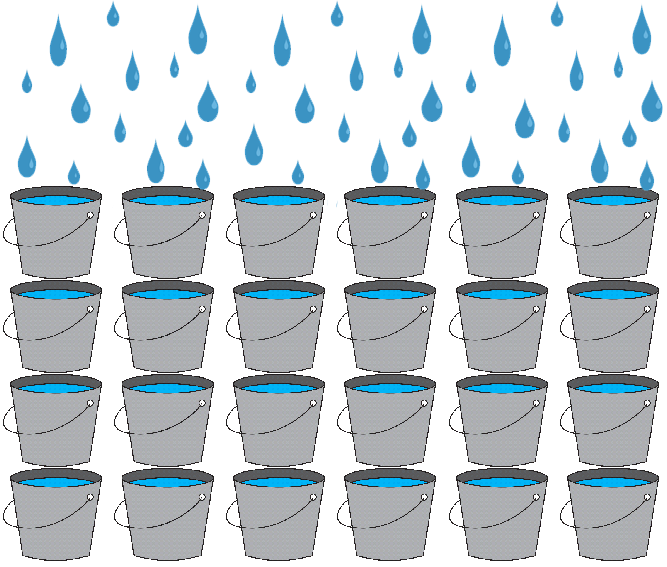There are two types of image sensors for industrial cameras on the market: CCD and CMOS sensors.
Both, CCD sensors (Charge Coupled Device) and CMOS sensors (Complementary Metal Oxide Semiconductor) convert light (photons) into electrical signals (electrons).In terms of performance, CMOS sensors have now not only caught up with CCD sensors, but also outperformed them. The main difference between the two types of sensors lies in their technical design.
Let’s first compare how the two sensor types work:
Camera sensors use picture elements called “pixels” to detect light. A common analogy when it comes to pixels is to imagine a series of buckets collecting rainwater.
The big difference happens when you read out the sensor!

CCD image sensors read out each pixelsequentially.
In our bucket analogy water is poured from one bucket to the next like an old-fashioned fire brigade.

CMOS image sensors read out each pixel in parallel. This means that CMOS cameras can read 100 times faster than a comparable CCD camera..

As a result of the integrated evaluation electronics, CMOS sensors offer the following advantages compared to CCD:
- Very high frame rates compared to a CCD of the same size
- Significantly lower power consumption
- No artifacts, i.e. unintentionally created differences to the image source, such as blooming and smearing typical for CCD do not occur.
- Lower need for light: Sensitive historical documents and books can be digitized particularly gently, as the light intensity can be significantly reduced during capture.
- Due to the flexible read out through direct addressing of the individual pixels, CMOS sensors offer more options for binning & partial scan/ ROI.
- Smaller size of the camera, as the evaluation logic can be integrated on the same chip (system on a chip).
